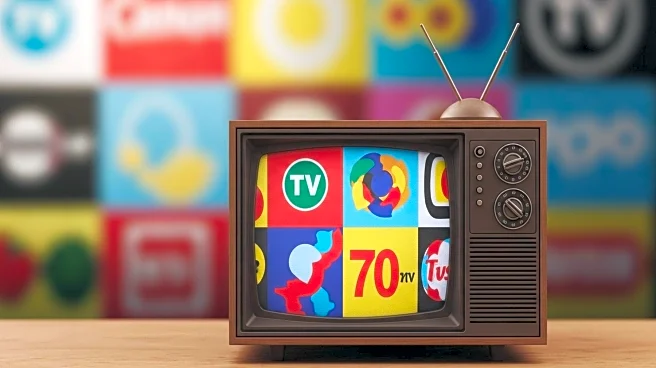What is the story about?
What's Happening?
TV advertising is undergoing a transformation, making it more accessible and measurable for brands of all sizes. The decline in linear TV viewing, particularly among younger audiences, has led to a shift in advertising strategies. By integrating linear TV with Connected TV (CTV) and broadcaster video-on-demand (BVOD), advertisers can reach lighter TV viewers more effectively. This approach has proven successful for brands like Inghams, which saw an 84% increase in web visits and a threefold return on ad spend through targeted advertising using Sky AdSmart. The evolution of addressable and programmatic TV buying platforms, such as StackAdapt and Sabio, allows brands to enter the TV advertising space with smaller budgets, making it more accessible to challenger and mid-sized brands.
Why It's Important?
The transformation in TV advertising is significant for the industry as it democratizes access to a powerful medium that was previously dominated by large advertisers. The ability to target specific households and measure the impact of campaigns through detailed attribution frameworks enhances accountability and transparency. This shift allows brands to combine the emotional storytelling power of TV with the precision of digital channels, driving measurable performance across the customer journey. As TV becomes more integrated with digital media, it offers brands the opportunity to build long-term brand recognition while achieving short-term activation goals, making it a versatile tool in the marketing arsenal.
What's Next?
As TV advertising continues to evolve, brands are likely to further explore the integration of TV with digital channels to maximize their reach and impact. The ongoing development of measurement frameworks will enhance the ability to track ROI and campaign effectiveness, encouraging more brands to invest in TV advertising. Additionally, the flexibility in budget allocation and targeting options may lead to increased competition among brands seeking to leverage TV's emotive power and accountability. Stakeholders in the advertising industry will need to adapt to these changes, focusing on innovative strategies to engage audiences across multiple platforms.
Beyond the Headlines
The shift in TV advertising reflects broader changes in media consumption patterns, particularly among younger audiences who favor digital and on-demand content. This trend may influence the future of content creation and distribution, as advertisers seek to align their strategies with evolving viewer preferences. The increased accessibility of TV advertising also raises ethical considerations regarding data privacy and targeting practices, as brands utilize detailed segmentation to reach specific audiences. As the industry navigates these changes, it will be important to balance innovation with responsible advertising practices.
AI Generated Content
Do you find this article useful?













